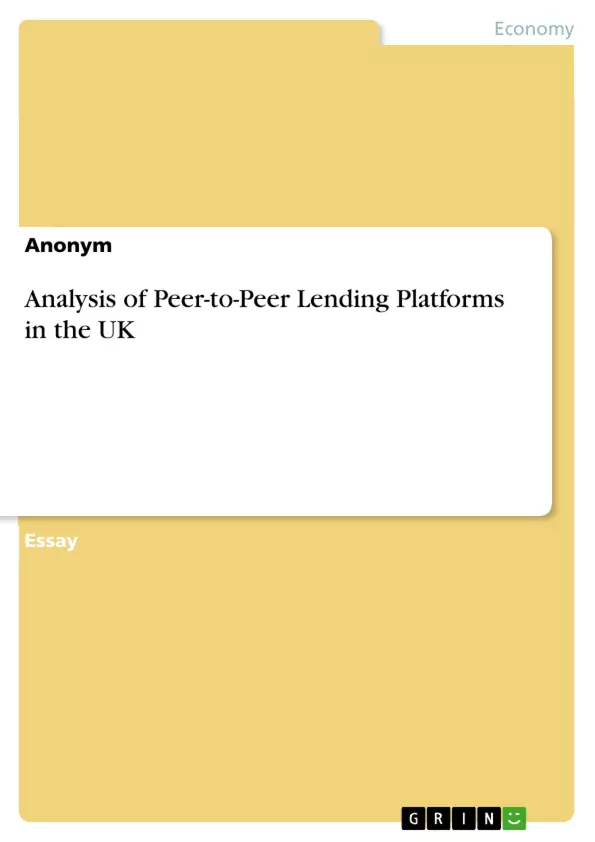Due to the exponential rate at which technology has developed in recent years, plentiful new businesses have established. The digital revolution is challenging many well situated, regulated and often conservative industries, such as the financial service industry. Several financial technology start-up companies, also known as Finance Technology Companies (FinTechs), thereby constitute as competitors to traditional retail banks by accessing technological innovations.
While the FinTech “eToro” is challenging the investment divisions, start-ups like “Transferwise” are putting pressure on the prices for payment and transfer services. The largest market volumes of so-called alternative finance models in the United Kingdom (UK) have peer-to-peer (P2P) lending businesses, such as ZOPA. P2P, or social lending allows individuals to borrow and lend money to each other directly, without intermediate financial institution, such as retail banks. Subsequently, the global trend of disintermediation also arose in the banking industry.
After reviewing relevant literature the market power of P2P lending as well as its impact on the financial services industry over the last ten years will be assessed. Furthermore, this essay will illustrate the current situation by evaluating the extent to which P2P FinTechs replace personal finance functions of retail banks in the UK. Finally, major aspects will be summarised and future aspects will be discussed.
Table of Contents
- Introduction
- Literature Review
- Evolution of P2P lending and its influence over the past ten years.
- Standing of P2P platforms in the Financial Services industry.
- Future Outlook
- Conclusion
- Reference List
- Appendix
Objectives and Key Themes
This essay aims to analyze the impact of peer-to-peer (P2P) lending platforms on the UK financial services industry over the past decade. It explores the growth, market power, and potential influence of P2P platforms, considering their current standing and future prospects. The analysis will also delve into the extent to which P2P platforms are replacing traditional banking services in the UK.
- The evolution and impact of P2P lending platforms in the UK financial services industry.
- The market power and potential influence of P2P platforms on traditional banking services.
- The competitive advantages of P2P platforms, including technology advancements, cost-efficiency, and regulatory factors.
- The future outlook of P2P lending and its potential impact on the UK financial services landscape.
- The role of macroeconomic and regulatory changes in shaping the P2P lending landscape.
Chapter Summaries
The introduction provides context for the rise of P2P lending platforms, highlighting the impact of technological advancements on the financial services industry. The literature review discusses the prevailing view of P2P platforms' influence, acknowledging their moderate but growing impact on the financial services industry. Chapter 3 focuses on the evolution of P2P lending over the past ten years, exploring social, political, and macroeconomic influences on their market position. Chapter 4 examines the current standing of P2P platforms within the financial services industry, highlighting their competitive advantages and potential threat to traditional banks.
Keywords
Key terms and concepts explored in this essay include peer-to-peer (P2P) lending, FinTech, financial services industry, disintermediation, alternative finance, technology development, macroeconomic influences, regulatory changes, market power, competitive advantages, and future outlook.
- Citar trabajo
- Anonym (Autor), 2016, Analysis of Peer-to-Peer Lending Platforms in the UK, Múnich, GRIN Verlag, https://www.grin.com/document/364472



